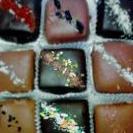-
Welcome to the eG Forums, a service of the eGullet Society for Culinary Arts & Letters. The Society is a 501(c)3 not-for-profit organization dedicated to the advancement of the culinary arts. These advertising-free forums are provided free of charge through donations from Society members. Anyone may read the forums, but to post you must create a free account.
Have we become too "matchy"?
-
Similar Content
-
- 791 replies
- 158,439 views
-
- 1 reply
- 1,957 views
-
- 75 replies
- 17,762 views
-
- 4 replies
- 1,350 views
-
- 7 replies
- 2,465 views
-
-
Recently Browsing 0 members
- No registered users viewing this page.






Recommended Posts